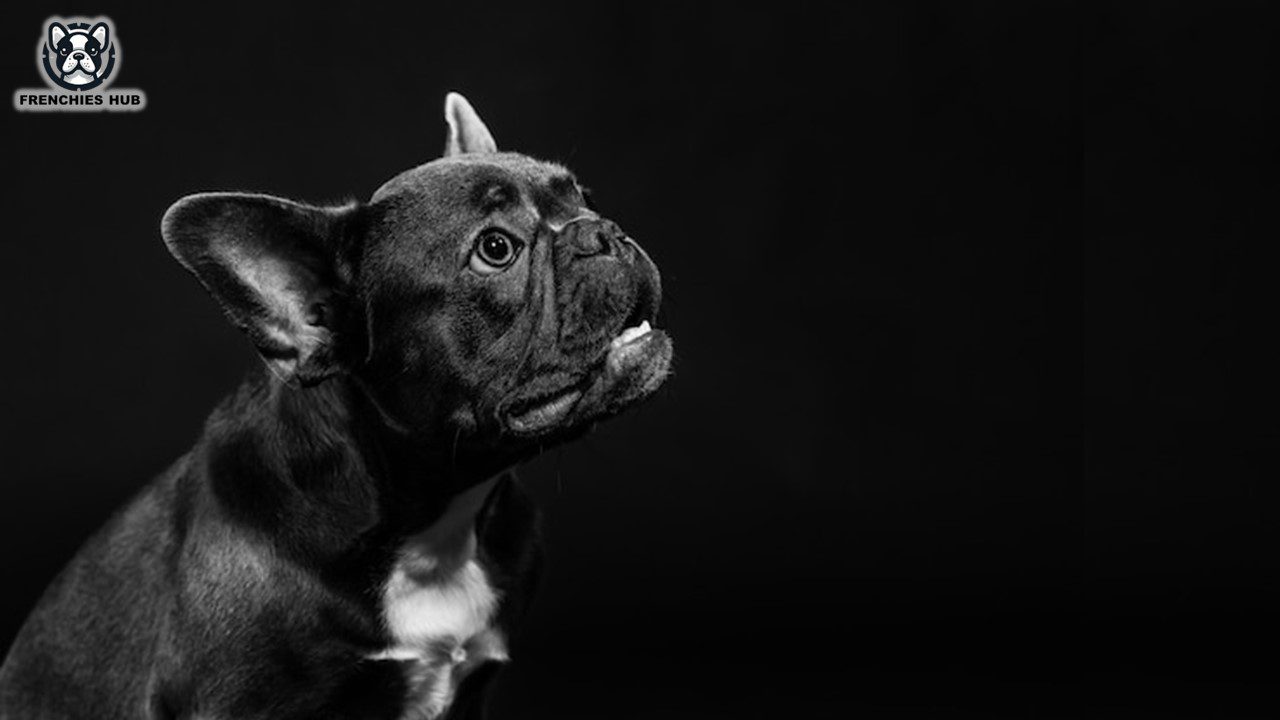The French bulldog carries a certain reputation concerning its eyesight. Many believe these charming dogs suffer from poor eyesight, a common misconception that doesn’t hold up against the truth. Contrary to popular belief, French bulldogs possess average-to-good eyesight. This misconception often overshadows the real abilities of these small yet sturdy companions.
In the personal journey I’ve had with my own French bulldog, Baxter, I’ve come to understand how eyesight plays a critical role in their lives. One evening, as we walked past dusk, I was curious to see how far Baxter could navigate in the dark. To my surprise, he moved with confidence, debunking the myth that French bulldogs can’t see well in low light.
Through this blog, I aim to illuminate the abilities of French bulldogs to navigate their environments, even in conditions that challenge their eyesight. We will explore how these dogs perceive the world in dim light and the evolutionary traits that enable them to do so.
How Well Can French Bulldogs See? Understanding Their Visual Acuity
When comparing French bulldogs to other breeds, their vision emerges as notably normal. They don’t suffer from particularly bad eyesight, nor do they exhibit the super great visual capabilities seen in humans or certain dogs bred for an active lifestyle that requires sharper eyesight for hunting tasks.
Although not at the best in the eyesight category, Frenchies surprisingly hold an average score that stands better than many. This is an interesting find, especially for those who might assume that all small breeds would falter in vision quality. My own experiences with these dogs reinforce this; their ability to navigate and interact in everyday scenarios doesn’t hint at visual deficits, although they are not the adept hunters some of their canine peers might be.
Vision in the Dark: Can French Bulldogs Really See?
Despite common beliefs that the French bulldog may not have the best vision during the night, their eyes tell a different story. These dogs possess pupils that are four times bigger than those of humans, allowing significantly more light to enter, which is crucial in low light settings.
Additionally, the retinas of French bulldogs are equipped with more rods, which are sensitive to light, as opposed to cones that are more about color perception and discerning shadows. This rod-dominance is key for their ability to navigate in the dark.
A unique feature in their visual arsenal is the tapetum lucidum, a mirror-like layer at the back of their eyes. This layer acts like a reflector, enhancing their night vision capability by bouncing back the light that enters their eyes, allowing them to see better even in dark conditions.
This adaptation doesn’t necessarily mean French bulldogs can see in pitch black, but they certainly have a better sense of sight in dimmer environments compared to what many might expect.
How Do French Bulldogs See Colors? Evaluating Canine Color Vision
It’s common knowledge that while dogs are not completely color-blind, their ability to see color differs markedly from that of humans. This discrepancy in color perception means that French Bulldogs, like other canines, do not interpret colors such as reds in the same way we do. Instead, their visual spectrum leans more towards blues and yellows.
This is not just a fact specific to French Bulldogs but applies universally across the canine family. Their eyes are structured to perceive color differently, optimized perhaps for their natural behaviors rather than the vibrant range of colors humans enjoy.
How Effective is a French Bulldog’s Vision?
When discussing the vision capabilities of French bulldogs, it’s clear they can see up to 20 feet. Beyond this point, objects begin to appear blurry, and by 30 feet, clarity significantly diminishes. This is quite similar to the visual range typical for many breeds, aligning closely with what everyone experiences in terms of depth perception.
Interestingly, some people claim that Frenchies can see well beyond these initial assessments. This belief is bolstered by their incredible hearing and sense of smell, which can compensate for visual shortcomings. It’s often the case that if a Frenchie is staring at something far away, it may be more about what it hears or smells rather than what it can see.
While the direct visual field might be limited to just a little over 20 feet, their overall environmental awareness is quite acute. They may not see details past the 20-foot mark, but their enhanced senses help them navigate and interact with their surroundings more effectively than one might assume.
The next time you notice your French bulldog pausing or reacting to something in the distance, consider the role their powerful ears and nose are playing. It’s not just their eyes doing the work — their combined senses make them far more aware of the world than their vision alone might suggest.
Common Eye Disorders in French Bulldogs: Identifying and Managing Risks
In-Depth Analysis of Conjunctivitis in French Bulldogs
Conjunctivitis, often referred to as pink eye, is a frequent health issue among French bulldogs. This condition is generally caused by bacterial or viral infections, though it can occasionally arise without a clear cause. The symptoms, which include redness, swelling, and discharge, can cause significant discomfort for the affected dog. Preventing this condition is challenging but achievable through vigilant hygiene practices and regular veterinary check-ups.
To combat conjunctivitis, it is advisable to choose a French bulldog from a reputable breeder who ensures the puppies are free from hereditary diseases. Regular cleaning of your dog’s eyes with dog eye drops can prevent build-up of dirt and bacteria, reducing the risk of infection. In cases where conjunctivitis does develop, treatment typically involves antibiotics and meticulous eye care to restore health and comfort to your pet’s eyes.
Addressing Corneal Ulcers in French Bulldogs
Corneal ulcers are a serious health concern for French bulldogs, capable of causing visual impairment and potentially leading to a complete loss of eyesight. These ulcers result from abrasions to the cornea, often exacerbated by bacterial infection. Immediate treatment with quick-acting medications is crucial to prevent further damage and begin the healing process.
Despite the alarming nature of corneal ulcers, they can often be successfully treated, allowing for partial or even full recovery of vision. Treatment strategies include the use of antibiotic eye drops, pain management, and sometimes surgery. Following a vet’s recommendations closely and administering prescribed treatments can lead to a swift recovery, minimizing discomfort and restoring your pet’s vision.
Comprehensive Look at Cherry Eye in French Bulldogs
Cherry eye is another common condition among French bulldogs, characterized by the protrusion of the third eyelid, which leads to a red bulge that can be visually striking and uncomfortable for the dog. This displacement occurs when the gland normally situated behind the eyelid becomes dislodged. If untreated, cherry eye can lead to more severe complications, including dry eye and secondary infections.
Treatment for cherry eye typically involves surgical intervention to reposition or remove the displaced gland, ensuring that it does not recur. Post-operative care is essential to prevent infection and ensure a quick recovery. Regular monitoring and early veterinary intervention can greatly improve the prognosis for dogs with this condition, helping them maintain healthy, pain-free eyes.
Essential Tips for Maintaining Clean and Healthy Eyes in French Bulldogs
Maintaining the eye health of French Bulldogs is crucial, especially considering their potential difficulties in dim lighting. This guide will provide comprehensive strategies for keeping your French Bulldog’s eyes clean and healthy, enhancing their ability to see in various light conditions.
Effective Care for Bulldog Eye Discharge
French Bulldogs, like humans, can experience a mix of watery and mucousy discharge from their eyes. This discharge is generally normal, but consistent monitoring is essential to prevent build-up that could impair vision. Eyelashes that surround the eyes play a role in trapping this discharge, which if not cleaned regularly, can lead to infections or discomfort.
To manage this, it’s important to regularly wipe your dog’s eyes with a soft, damp cloth. Avoid using anything harsh that could irritate the eyes. Regular vet check-ups can also help ensure that any abnormal increase in discharge is addressed promptly, keeping your dog’s vision sharp and preventing any long-term damage.
Maintaining Fur and Eye Area Cleanliness
Keeping the area around your French Bulldog’s eyes free from matting and clumps of excess matter is essential for their comfort and health. Buildup of dirt and debris can lead to irritation and even infections that complicate their ability to see, especially in low light.
Regular grooming with tools specifically designed for delicate areas around the eyes can prevent these issues. Ensure that the fur around the eyes is trimmed regularly, which not only helps in maintaining hygiene but also prevents debris from catching in the fur and scratching the eye. Incorporating these practices into your routine will keep your bulldog’s eyes clean and their vision unobstructed.
Nutritional Contributions to Eye Health
The diet you provide your French Bulldog can have a significant impact on their eye health. Foods rich in nutrients, vitamins, and minerals are critical, not just for overall health but also for maintaining good vision. Ingredients like Blueberries, broccoli, pumpkin, eggs, and carrots are excellent for eye health, providing antioxidants and vitamins that support vision clarity.
Incorporating these foods into your French Bulldog’s diet can help keep their eyes sparkling and prevent various eye-related diseases. Consult with your vet to tailor a diet that meets all your pet’s nutritional needs, thus supporting their vision and overall wellness.
Early Detection and Management of Eye Conditions
It’s vital to be vigilant about any signs of eye trouble in your French Bulldog, such as discharge, excess tearing, or the appearance of hard lumps. Swelling or redness can also indicate underlying problems that may affect their ability to see, particularly in low light conditions.
If you observe any of these symptoms, it’s imperative to contact your vet immediately. Early detection and treatment can prevent minor issues from developing into more serious conditions that could significantly impact your dog’s quality of life. Regular veterinary visits and adhering to a preventative care routine are key components in managing your French Bulldog’s eye health effectively.
Final Insights
Known for its wrinkly face and unique physical characteristics, the French bulldog is a breed that captures hearts with its appearance. Beyond their charming looks, these dogs are built compactly with muscular limbs and a small build, which lends them a surprising level of agility and speed. However, when it comes to the sensory capabilities, particularly eyesight, French bulldogs present an interesting case.
Although their vision is better than that of most dog breeds, it does not compare to the visual acuity of humans. This difference is particularly noticeable in low light conditions, where their ability to see clearly diminishes. Their eyes are adapted to function well enough for their lifestyle, but in the dark, their capabilities are somewhat limited.
Despite these limitations, French bulldogs navigate their environments quite effectively. Their agility and speed compensate for what they lack in visual depth, allowing them to enjoy their surroundings safely and playfully. It’s a testament to their adaptability and the efficiency of their other senses that help them interpret the world around them, even when their eyesight is not as good as we might expect.

